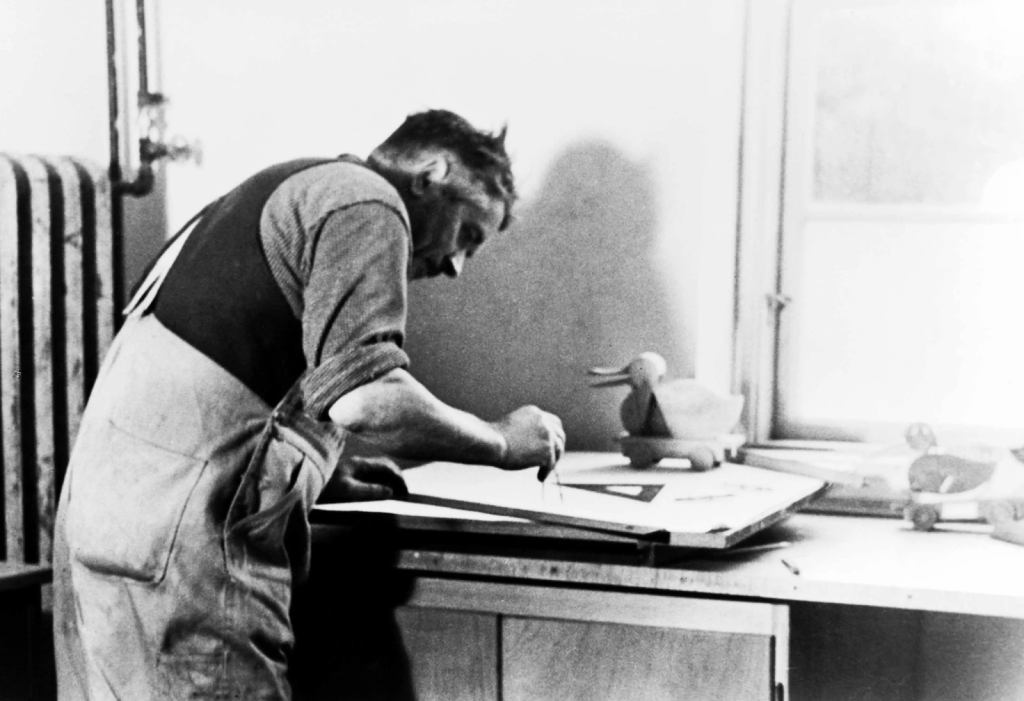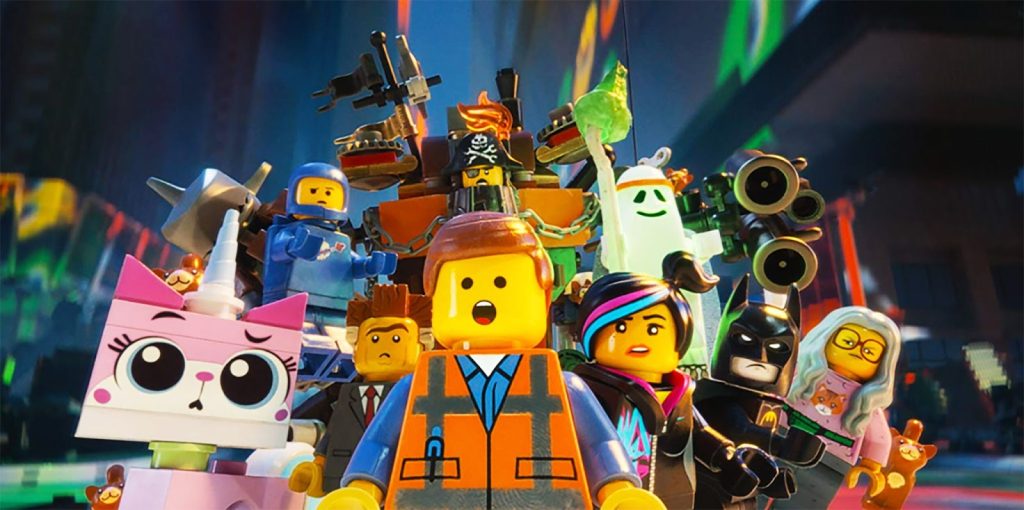Ole Kirk Kristiansen, a carpenter from Billund, Denmark, founded the LEGO Group in the 1930s and it’s been history for the brand ever since.
After all, we are all familiar with LEGO; for many of us, they had a lasting impression on our childhood that we won’t forget. Everyone seems to have a fond LEGO memory, whether it be building a LEGO tower or watching the LEGO moving for the first time.
Although small, these colorful building bricks impacted hundreds of thousands of lives and created lasting memories we won’t forget. The nostalgia we see when a tiny, bright building block turns up is an assortment of memories that trigger joy and playfulness.
However, although our memories are consistent and impressionable, the brand itself was not always that. The LEGO Brand has come a long way, specifically with its marketing and how it presents itself to consumers.
Although we now recognize the LEGO logo as one of the most iconic and memorable of all time, the brand has not always had that logo. The LEGO logo has had a long history with many revisions to reach the point we see today. The very first LEGO logo looked drastically different from the one we see today.
The LEGO logo has a long history of complex changes, different fonts, colors, and placement to get to the point that we see today. In this logo, we will look at the history of the LEGO logo, the history of the brand itself, and how it got to the point that we see it today.

1934––1936: The First Logo
The first LEGO logo was introduced in 1934 and lasted only two years before it was redone. This logo was simplistic, featuring a wordmark with large, chunky letters. The name was in all caps, and the letters were in black and boldly on the logo. The logo was very modern for its time, as other wordmarks during this time featured a very similar look. Although this logo was impressionable, the issue was that it wasn’t clear what the brand was selling. It was hard for people to identify that LEGO meant toys.

1936––1946: More is Added
Only a couple of years after the first logo was created, LEGO decided it was time for a change. They changed the logo by making it softer, using skinner letters for the company’s name, and adding to the side and bottom of the logo.
The wordmark was thinner now, and it seemed softer. Although still in black and white, this time, it didn’t stand out as boldly and rather appeared more elegant.

1946––1950: Color is Added
1946 the brand launched a new logo, but this time, they made a more drastic change. Rather than sticking with a black-and-white logo, they decided to add color. For the first time, the logo looked like what it sold. The logo now featured the company name in bold letters on top of a box-like structure, similar to a toy box. The colors chosen were orange, yellow, and black––three colors that stood out and, although not the most playful, instantly grabbed attention. The lettering went back to bold, but this time, it also had shadowing behind it and was outlined in black. This wordmark appeared playful and had the words “Billund Danmark” added to it.

1950––1953: A Different Type of Logo
The previous logo stayed with the brand for four years before the company decided that it was time to ditch the toy box and bold lettering. This time, they used a circle that resembled a stamp. The LEGO wordmark was in the center in red with a black circle around it, and “Billund Danmark” was shown inside of the black outline in white. This logo was certainly a drastic change from the previous one, and it was more boring and less of an attention getter than the previous one.

1953––1955: The Yellow Logo
As with all their logos, LEGO did not stick with the previous logo long. Three years and, they had already decided it was time for a different wordmark, this time leaning in a different direction. The 1953 logo showed a yellow rectangle with the company name in the center in big, chunky, orange letters. The letters were outlined in white and appeared to be almost shining against the yellow. The yellow block was reminiscent of a LEGO block while the color choice helped to appear friendly and inviting to the brand’s audience.
1955––1998: The Red Oval
Next, the brand experimented with using a red oval for its logo. This version of the logo showed a red oval with the company name in the center in white and outlined in black. The letters had rounded corners that appeared bubble-like and truly represented the brand. The logo was creative, and the name stood out against the red, creating a striking and memorable wordmark.
1998––Present: The Logo Today
The previous logo underwent many minor changes throughout the year, with words added and removed and different shapes emerging. However, the one thing that was consistent was how the company name was shown in big white letters and outlined in black. The background also consistently remained red throughout the years.
The logo shown above is the logo that you will find on LEGOs today. This logo shows a red square with the iconic company name in the large lettering in the middle. This logo showed it with a yellow outline surrounding it so that the name stood out. Memorable aspects of the brand were untouched, creating a legendary wordmark representing the company since then.
The History of LEGO
The origin of LEGO began on August 10th, 1932, when a man named Ole Kirk Christiansen created the LEGO Group. He decided on the name because it had a double meaning; LEGO was derived from the two Danish words “leg godt,” which means “play well.”
Christiansen was a carpenter who made different wooden items in his Denmark workshop. At first, his focus wasn’t on toys; he created furniture, ladders, and other such wooden items. He created wooden models to show his products off and soon realized that these could be more than just models; they could serve as toys for children to play with.
He found that children were interested in these, and the smaller miniature models sold better than the full-sized items.
It wasn’t until 1949 that the first LEGO block was created. This first plastic brick was a precursor to the company’s signature brick that shows interlocking studs on the top and tubes on the bottom for its ability to stack. These bricks did not gain immediate popularity.
The toy was launched during a time when wooden toys were still popular, and people were skeptical of anything new. However, Christiansen didn’t give up and was persistent about the idea of LEGO bricks. LEGO began to entirely move away from producing metal and wooden toys to focus on these new bricks and getting the market to warm up to them.
LEGO’s persistence was productive because, as the company surged forward and grew, people became interested in the product.
Throughout the years, LEGO bricks quickly spread through Europe, and the first LEGOLAND theme park opened in Billund in 1968.
Although, as with any company, LEGO did have its downtimes, it was massively successful. LEGO reported its highest earnings of all time in 2016, bringing in $5.7 billion.
Since then, LEGO has only grown and become more famous, with the LEGO bricks making their mark on children around the globe.
The LEGO Movie
Perhaps the largest testament to LEGO’s success is the LEGO movie, a film that was released in 2014. This film was produced by Warner Animation and had massive success.
Although the film didn’t exactly use stop motion, it did use a combination of real LEGO sets, plastic and large-scale models, and CGI. This film is still known today as one of the most creative, entertaining and unique movies to exist.
When you watch the film, you can see how every scene appears authentic, and this is because it is. Real LEGO bricks were used in the film, and labor and effort were put into creating an accurate and realistic movie using the iconic LEGO bricks.
Conclusion
Everyone recognizes the colorful, small building brick: a LEGO. LEGOs are famous around the globe and have been around since Ole Kirk Christiansen created them in 1932.
However, the LEGO brand that we are familiar with today has not always been what we see and rather has gone through many changes to get to this point. Above, we looked at the history of the brand’s visual identity and how it’s evolved into what we see today.
We also looked at the company’s history and how it evolved into a famous brand we easily recognize. Today, we see that LEGO’s popularity continues to grow with their logo being one of the most recognizable of all time.















